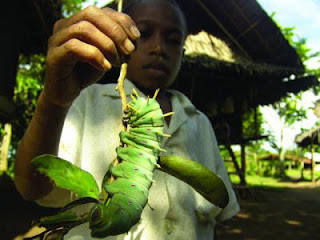Friday, August 19, 2011
Calculating diversity
I learned so much in the past three weeks, from the meaning to biodiveristy, to how to use this spreadsheet to analyze stuff, I feel utterly overwhelmed. I LEARNED SO MUCH!!! I laughed so much, heard so much, saw so much, I am a totally different person that I was before this Team!!!
Eric C.
A Great Learning Experience
~Student 08
Its almost over!!!!!
this was fun
Liam K.
LAST DAY OF LANG!!! :(
last day post
What I learned
Thursday, August 18, 2011
Urban Biodiversity Network at AMNH

Giant Lilyturf; Lirope gigantea
and a Black Locust Tree; Robinia pseudoacacia.

an Oak Tree; Quercus alba,

 I have identified four plants so far.
I have identified four plants so far.
There is bamboo;
| Kingdom: | Plantae |
| (unranked): | Angiosperms |
| (unranked): | Monocots |
| (unranked): | Commelinids |
| Order: | Poales |
| Family: | Poaceae |
| Subfamily: | Bambusoideae |
The Giant Lillyturf is in both plots.
Liam K.
Platanus acerifolia
leriope gigantica
Liriope gigantea
Lilyturf is the workhorse of warmer shade gardens. Its strap-leaf foliage never grows beyond its designated size, which is perfect for city gardens or condominium communities. Thrives in courtyards and atriums, where soils remain perpetually moist. Uniform size makes it ideal for edging plants. Remarkably beautiful in dry streambeds or beside water gardens and fountains. Fits well into Asian-inspired schemes and as a texture contrast in Fern dells. Begs to be planted where its attractive flowers can be viewed up close.
Abbotswood Potentilla
Potentilla fruticosa
The genus Potentilla, commonly known as cinquefoil (five-leaflets) is classified in the rose family with flowers that resemble those of a 5 petal wild rose. It includes over 500 different species of shrubs and herbaceous plants. The genus was classified by Linnaeus in the 18th century, the name derived from the Latin potens, which means powerful, as the European species were considered potent medicinal plants. This species is native to much of Canada, New England and cold mountains from coast to coast. This species and its cultivars encompasses most of the cultivated plants in the genus. There was an effort to reclassify the plant in its own genus Daisphora fruticosa by Per Axel Rydberg, 1860-1931 of the New York Botanical Garden.http://www.monrovia.com/plant-catalog/plants/1802/giant-lilyturf.php
http://www.monrovia.com/plant-catalog/plants/1999/abbotswood-potentilla.php
My Species


In my first plot
There is bamboo;
| Kingdom: | Plantae |
| (unranked): | Angiosperms |
| (unranked): | Monocots |
| (unranked): | Commelinids |
| Order: | Poales |
| Family: | Poaceae |
| Subfamily: | Bambusoideae |
an Oak Tree; Quercus alba,
and a Black Locust Tree; Robinia pseudoacacia. The Giant Lillyturf is in both plots.
Liam K.
Plant Identity
My partner Hollis and I discovered one of the unknown plants inside of our plot. The name of the first plant is Giant Lilyturf (Liriope gigantea) and looks exactly like one of the plants inside of our plot. It is very similar to grass but has a white streak in the middle of the leaves. Another plant we discovered that was unknown to us was the Abbotswood Potentilla (Potentilla fruticosa) which is a white flower plant located in our plot.
Plant Identification Resource Guide
| |
Wednesday, August 17, 2011
What does the UN say about Urban Biodiversity?
Urban Biodiversity | ||
|
guess what trees dont do much!!!!!!!!
~Student 08
You can do things with Excel!
Liam K.
Averages and observing plots.
8/17/11 in UBN... :)
Standard Variation
Wednesday, August 10, 2011
how to put a youtube video on bloger
BIODIVERSITY!!!!!!!!!! :)
Monday, August 8, 2011
My bitly...
Conservation of tropical biodiversity in agricultural landscapes has become more important as the area covered by natural ecosystems decreases. We analyzed the effects of local livelihoods, cooperative types, and selected biophysical variables (elevation, slope, percent shade, distance to the forest, coffee density, and coffee age) on tree biodiversity in shade coffee cooperatives of El Salvador.
Tree inventories from 51 quadrats in coffee cooperatives included 2743 individuals from 46 families and 123 identified tree species. Species richness and tree diameters differed among some cooperatives, with greater richness associated with greater stem density; other biophysical variables had little impact on diversity. The amount of shade in the coffee plantations differed among cooperatives, particularly in the wet season. Of the tree species reported in a recent study of a neighboring forest and in the cooperatives (N = 227 species combined), 16% were present at both sites. The three coffee plantations shared 35% of total species reported from all cooperatives.
Our research shows that the number of tree species found in a coffee plantation increases with the density of shade trees included in the system. In turn, agroecological management, as influenced by farmer livelihood strategies and cooperative types, directly affects shade canopy composition. Important factors to take into account are the types of farmer organizations present, the cost of maintaining species of conservation concern, and the potential benefits that conservation could bring to the livelihood strategies of farm households.
# 2006 Elsevier B.V. All rights reserved.
Above is my shortened link to the explanation of Environmental Issues: Biodiversity and Conservation. It explains how the changes of the environment can affect many species and plants living in the area and on the planet. With the link provided, you can learn about the environmental issues that affect biodiversity, and about conservation efforts that could maintain biodiversity around the world.
Ask.com, Ask.com. "Environmental Issues - Biodiversity and Conservation." Environmental Issues - News and Information about the Environment. Ask.com. Web. 08 Aug. 2011.



















